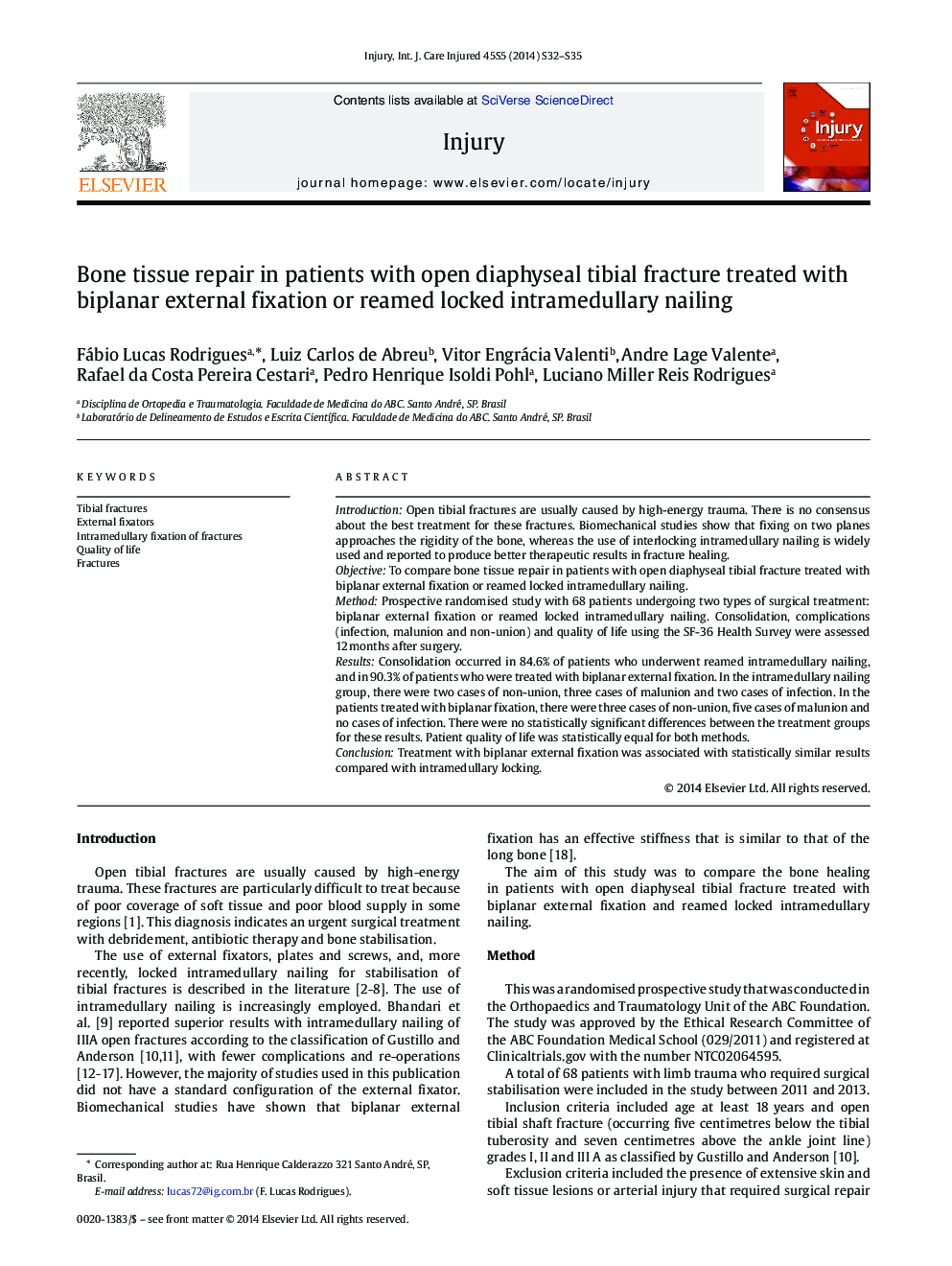| Article ID | Journal | Published Year | Pages | File Type |
|---|---|---|---|---|
| 3239874 | Injury | 2014 | 4 Pages |
IntroductionOpen tibial fractures are usually caused by high-energy trauma. There is no consensus about the best treatment for these fractures. Biomechanical studies show that fixing on two planes approaches the rigidity of the bone, whereas the use of interlocking intramedullary nailing is widely used and reported to produce better therapeutic results in fracture healing.ObjectiveTo compare bone tissue repair in patients with open diaphyseal tibial fracture treated with biplanar external fixation or reamed locked intramedullary nailing.MethodProspective randomised study with 68 patients undergoing two types of surgical treatment: biplanar external fixation or reamed locked intramedullary nailing. Consolidation, complications (infection, malunion and non-union) and quality of life using the SF-36 Health Survey were assessed 12 months after surgery.ResultsConsolidation occurred in 84.6% of patients who underwent reamed intramedullary nailing, and in 90.3% of patients who were treated with biplanar external fixation. In the intramedullary nailing group, there were two cases of non-union, three cases of malunion and two cases of infection. In the patients treated with biplanar fixation, there were three cases of non-union, five cases of malunion and no cases of infection. There were no statistically significant differences between the treatment groups for these results. Patient quality of life was statistically equal for both methods.ConclusionTreatment with biplanar external fixation was associated with statistically similar results compared with intramedullary locking.
